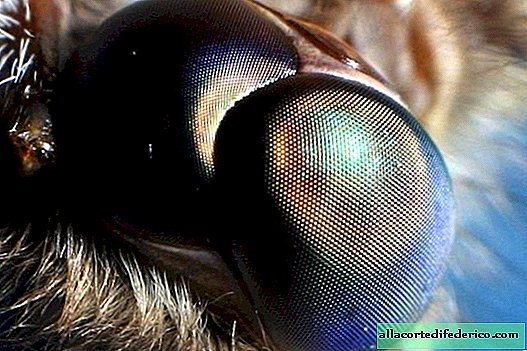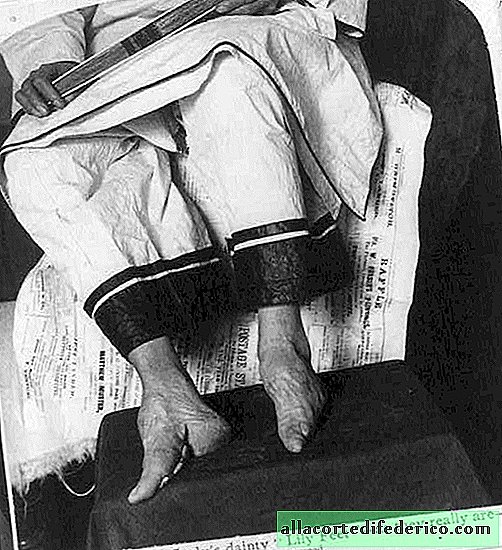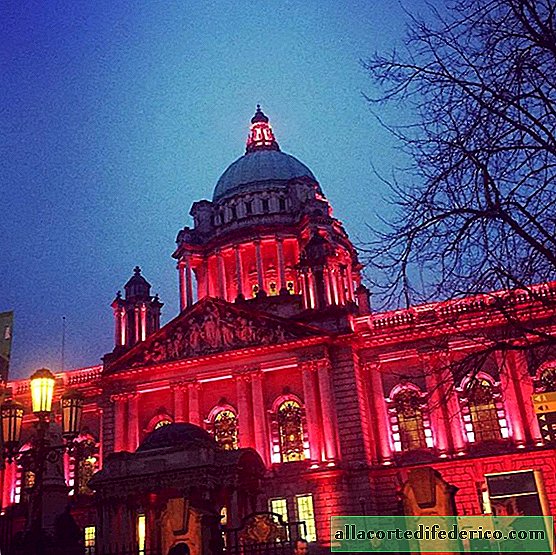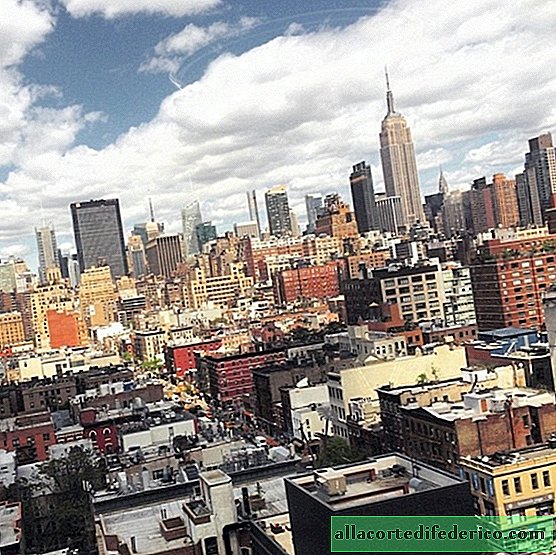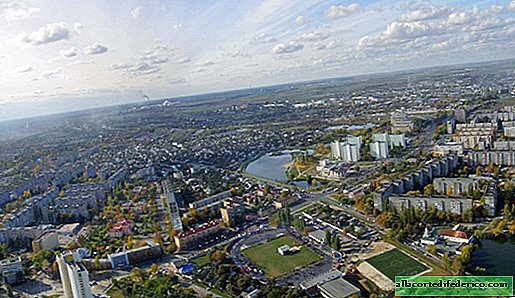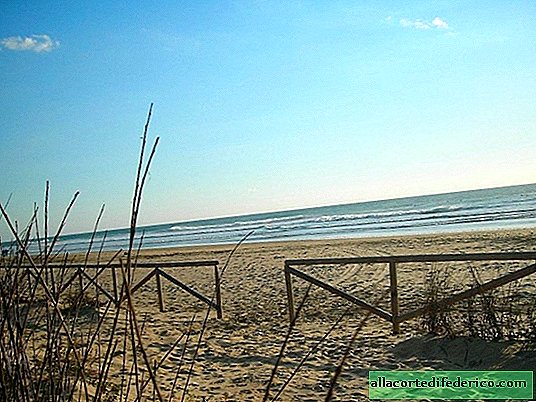Stockholm: what to see in 5 hours
To be honest, I don’t like blitz raids on cities. We prefer to walk slowly, relish the taste of the city, look at architecture, people, stop at a cafe to have a cup of coffee or eat a cake, we like to stay in souvenir shops and then wander around.
But this time everything happened all of a sudden, and so, unexpectedly for ourselves, we ended up in Stockholm. We had 5 hours to “plunder” the city and cloudy weather with drizzling snow.

The Viking Line ferry terminal (No. 1 on the map below) is located near the historic center of Stockholm. The laziest in the center can be reached by bus 53, but we decided to walk. A walk to the Slussen metro station, from which, in fact, the acquaintance with the city began, took 20 minutes. The road from the terminal to the metro goes along the promenade, from where beautiful views could open ... but today the whole promenade is under repair and fences, so here we are not broken off.
The second bummer was the repair of the passenger elevator Katarina (No. 2) and the observation deck to which he lifts. As we were told, the elevator has been closed for half a year already, so there is a chance that it will be opened soon. Exactly under the elevator is the Slussen metro station, but we don’t need the metro, we go further and exit on the Söder mälarstrand promenade (No. 3)
It offers stunning views of the Riddar Holmen ...

... and to the Gamla Stan area (Old Town). As you can see, there is also a repair on the embankments.
Behind the beautiful houses on the embankment, the German Church or St. Gertrude Church (No. 4) is clearly visible. The church is located between Tyuska Brinken, Svartmangatan and Prestgatan streets. In the Middle Ages, this quarter was inhabited mainly by Germans, hence the name - "German". The height of the church’s spire is 86 meters, and its bells ringing is heard four times a day in the Old Town.

The weather in Stockholm we got "snowy", and most of all I was surprised that even in the very center of the street do not clean. Well, rather, in some places, somehow, but because they constantly jumped over a wet snow mess. But the truth is that they are not sprinkled with any reagents either. Honestly - in Moscow it is much more comfortable in this regard, here in an hour I just got wet.
Before us is the Stockholm City Hall (No. 5), located on the island of Kungsholm. You can get into it only with a guided tour, they say that they sell delicious ice cream inside. Well, the town hall is famous for the fact that it is here, in the main hall, ceremonial receptions take place at the presentation of the Nobel Prizes.

Behind us is a very beautiful building of the Mariahissen Palace (No. 6), built in the Neo-Gothic style. A 28-meter elevator rises from the promenade directly to Mariahissen and the Dutch-style flirty Laurinska huset above it. You can admire the views of these buildings from the Centralbron Bridge (No. 7).

Under the bridge there is the Gamla Stan metro station. I think, from here beautiful views with evening lighting.

From the bridge, turn left and get into the Riddar Holmen area. The area is in the form of a small peninsula, and from it there is a good view (No. 8) of the town hall and the monument to Evert Taube, a Swedish poet, composer, performer of ballads of his own composition. It is unfortunate that there was not enough time to ride a boat between the islands, although, probably, in the summer it is much more interesting.

Wrangel Palace (No. 9), built in 1625 and for special merits presented to the commander Karl Gustav Wrangel by Queen Christina. Wrangel rebuilt the palace, and it became the largest private palace in Stockholm. Over time, for several reasons, the palace went to the state, and now the Civil and Criminal Courts of Appeal are located here.

Royal tomb of Riddarholmskyrkan (No. 10). This is the only surviving medieval temple in the city, built at the end of the 13th century and has long served as the burial place of Swedish kings.

And we cross the Vasabron bridge from Riddar Holmen to Gamla Stan (Old Town). It is here that all the most interesting is concentrated.
The first thing that meets in the Old Town is Riddarhuset (Knight's House) (No. 11), built in 1642-1672 as a building of the Noble Assembly. For a long time the Swedish parliament met here, a kind of analogue of the English House of Lords. In the XIX century, the parliament moved to the building where it is to this day, and representatives of the noble families of Sweden still gather in the Knight’s House, their names (about 700 people) are embossed on copper planks in the central hall of the palace. Tourists and ordinary residents can visit the palace for 1 hour per day, from 11 to 12 hours on weekdays, paying 60 kroons (6 euros).

We go further, and in front of us is the powerful building of the Swedish Parliament - Riksdag (No. 12). It is located on the island of the Holy Spirit - Helgeands Holmen, connected to the Old Town by the Stallbron bridge

As elsewhere in Scandinavia, winter is not an obstacle for cyclists. People on bicycles were constantly rushing past us, who weren’t afraid of snowfalls and slush on the roads. By the way, I really liked that the bike paths in the city are wide and separated from the roadway and sidewalks. True, due to the fact that the roads are not cleaned, we several times found ourselves vigorously stomping along the bike path, and not along the sidewalk.
With turrets and a green roof - a publishing house founded in 1823, and on the left - the building of the old national archive of Sweden (No. 13), built in 1887-1890. By the way, it was in this building that the first elevators in Sweden were installed. Now here is the Swedish Foundation for National Children's Culture.

The Royal Palace (No. 14) is the official residence of His Majesty King of Sweden Charles XVI Gustav. Here are official gala dinners and receptions at the highest level. However, most of the palace is open to visitors all year round. In summer, the palace is open from 10 a.m. to 5 p.m. seven days a week, in spring and autumn from 10 a.m. to 4 p.m., and in winter from 12 a.m. to 3 p.m. except Monday. Entrance fee is 160 kroons (16 euros). There might have been some kind of event on our arrival, because the police gradually cordoned off everything, a police helicopter circled over the palace, and beautiful military men in full dress were waiting in the park nearby.


28 species of waterfowl! If it weren’t for a limited time, I wouldn’t leave quickly.
And we go around the Royal Palace along the promenade. Monument to King Gustav III.


And we are returning to the Royal Palace. Do you think that the sailors are preparing for the assault on the Winter? But they didn’t guess)) This is a change of guard of honor near the palace. True, we managed to reach its final part, and then the police dispersed everyone, flocking more and more to the palace.


And this is Stortorget (No. 18) - Stockholm's oldest square, it was around it that the formation of the city itself began. Most of the houses here were built in the 17-18th century, although the house of the 15th century has been preserved. It was on this square that the event of 1520, unfortunate for all of Sweden, took place: The Blood Bath, when the Danish-Swedish king Christian II ordered the decapitation of 92 fighters for the country's independence from the Danish occupiers.
See the red house? In its facade there are exactly 92 white bricks in memory of the dead. There is a legend that if at least one brick disappears from the facade, then the ghost of the person in whose honor this brick was laid will forever roam the Old Town.
In the yellow house (to the right of the red one) there is a wonderful cafe Chokladkoppen, in which funky cinnamon rolls and fabulously delicious cocoa in huge cups.
And if you turn left, then through two houses there will be a souvenir shop and travel information, where a Russian young lady works, there are also city maps in Russian and walking tours with Russian-speaking guides.
If you walk between the houses along the street, there will be a 7-Eleven store where you can buy, in addition to food, postcards and stamps (well, what if you don’t run around looking for mail if you like to send postcards to yourself or friends).
I won’t even talk about how the snow is removed - everything is visible in the photo.

Immediately on the square is the building of the Stock Exchange (No. 19). Now here is the Swedish Academy of Sciences, the Nobel Museum and the Nobel Library. Here they decide on the Nobel Prize.
And in the corner of the frame is a fountain, but in winter it looks like a gray stone block. I'd rather show it later in the summer.

On this our walking part of the walk came to an end. A five-minute walk from the square is the Gamla Stan metro station, and we left a little more than an hour to watch the unusual stations of the Stockholm metro.
After the metro tour, we drove to the Slussen station and traveled by ferry with a stop to take an evening view of Stockholm with the lights just turned on.

Of course, in such a short time it is impossible to have time to see everything that we wanted, but we have a reason to come here again.


